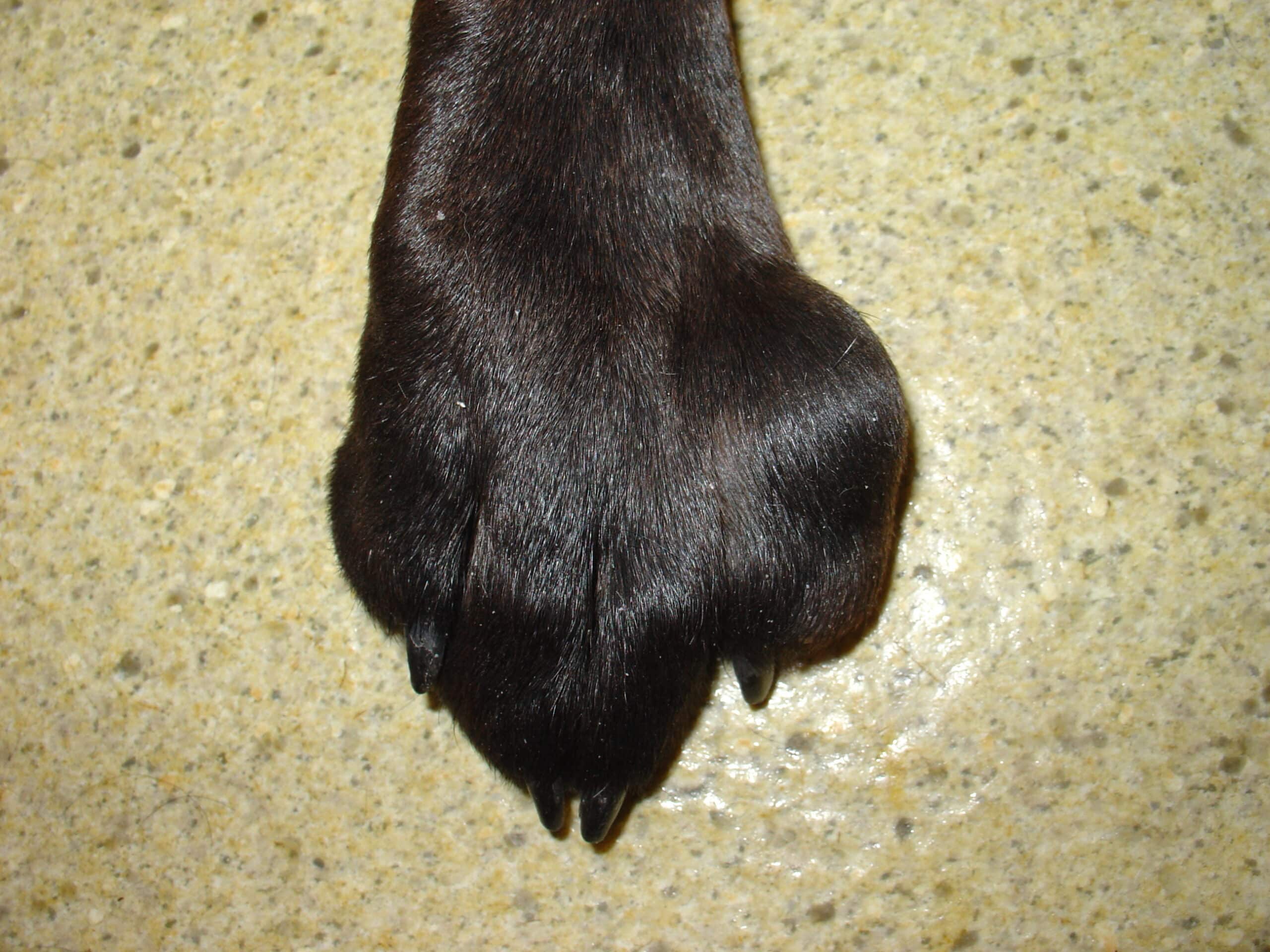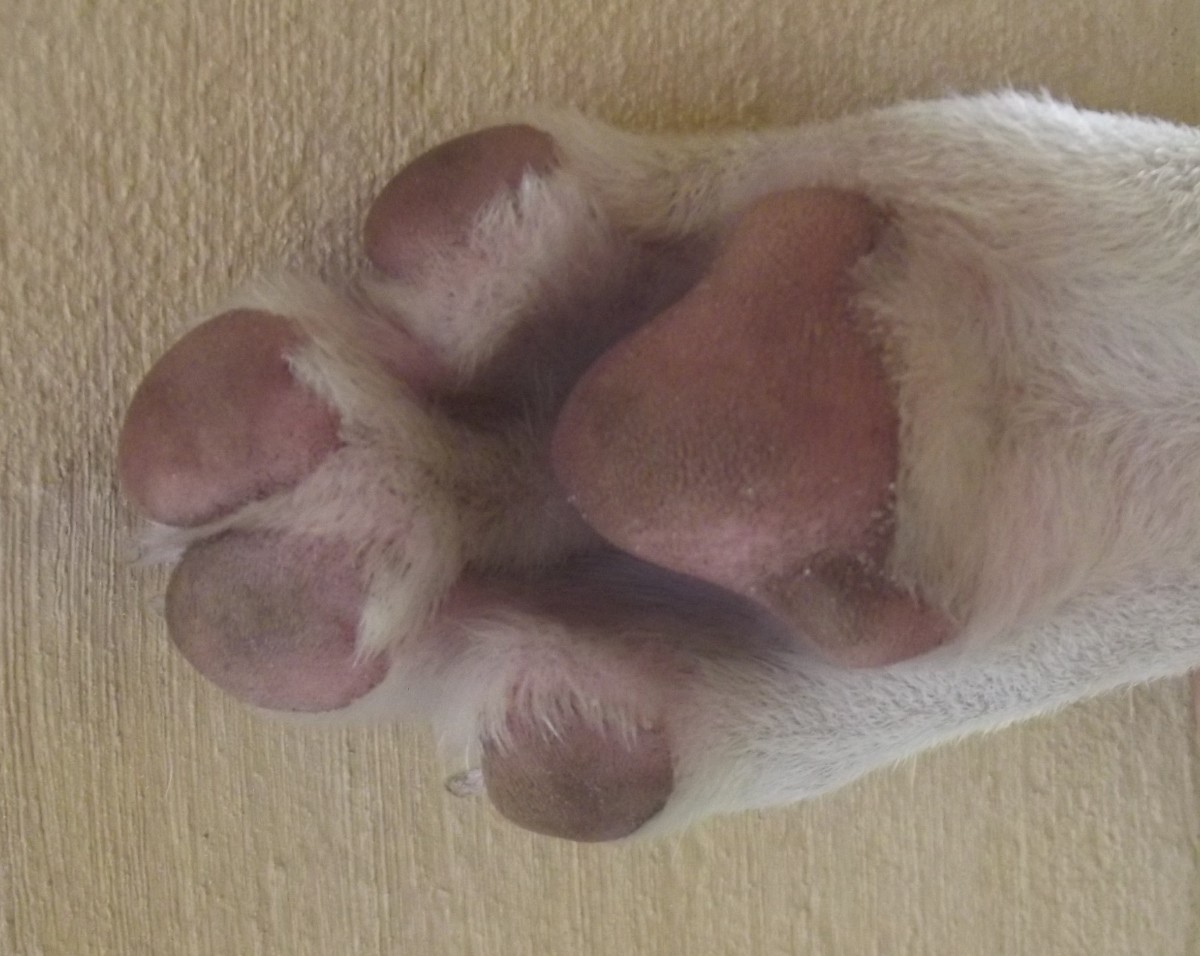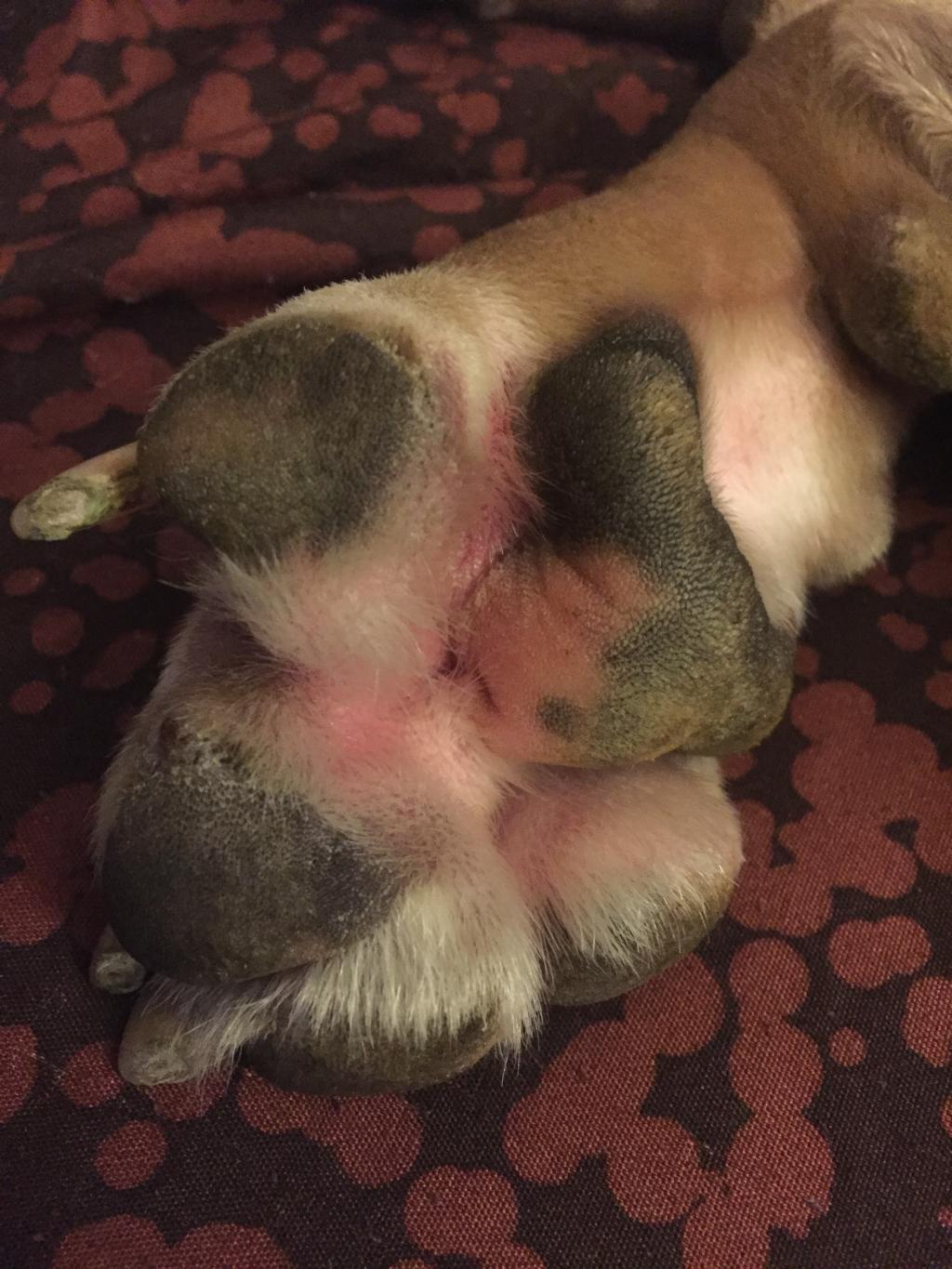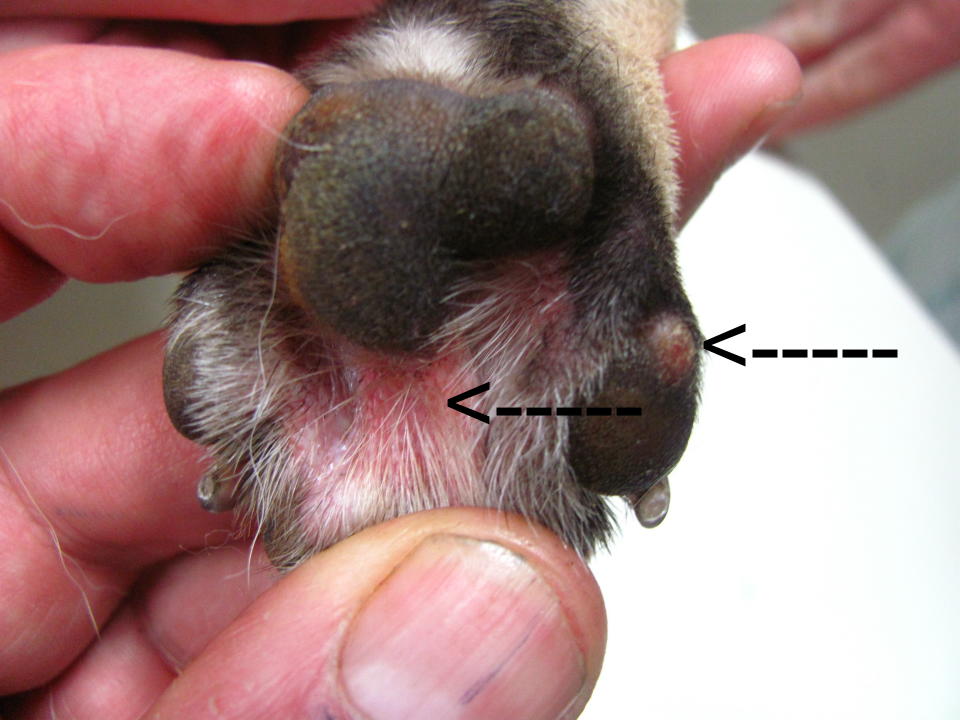
Dog Paw Swollen between Toes, Around Nails Dogs, Cats, Pets
Symptoms of foot inflammation in dogs often noticed by dog owners include itching, redness, swelling, loss of fur, presence of ulcers, thick skin in the webbing between the toes, cracked paws, skin odor, painful walking, presence of nodules, and persistent licking, often to the point of staining the fur with a rusty color if the dog happens to.

What Should You Do if Your Dog Has a Swollen Toe?
There are many reasons why a dog will present with a swollen toe. In most instances, there is a simple and correctable issue such as infection around the base of the nail, trauma resulting in loosening of the nail (and subsequent infection in the deeper tissues) or penetration with foreign body material (e.g. sliver of wood, etc.).

23+ Bulldog Paws Red And Swollen How To Treat Pic Bleumoonproductions
Sometimes, the dog will just look puffy all over, as if their entire body is swollen. This can happen when the body doesn't have adequate protein, has too much sodium, or if there is a severe bacterial infection. Another common symptom is a very swollen abdomen, sometimes looking as though the dog has swallowed a large ball.

Why Does My Dog Have Swollen Feet and What Are Some Natural Cures? PetHelpful
Most dogs lick their paws, but when licking becomes excessive, problems can arise. Pododermatitis is a common condition in dogs that constantly lick or chew their paws. It starts with inflammation and can result in an infection of the skin, nails, nail folds, or foot pads. Pododermatitis most commonly occurs between a dog's toes.

My dog’s one toe is very swollen and looks painful, she was licking it a lot. she has chronic
A swollen toe can cause limping or reluctance to walk due to pain. Usually, only one toe is affected. [Editor's Note: If you see your dog limping for any reason, visit the veterinarian.] Cancerous tumors can be tricky as they may disguise themselves as a broken toenail.

Treat a Dog Infected Toe Nail Propolis Power
Pododermatitis is a term used to describe inflammation of the feet or paws. What causes pododermatitis? Pododermatitis has many different causes. Some of the specific causes of pododermatitis include: Infectious causes include bacteria, yeast, fungal and parasites

Hey! I noticed my dogs foot is swollen between two toes and it is pink and raw. He is repeatedly
A dog's swollen paw can point to a number of causes including injuries, insect bites, dry skin, infection, burning from hot surfaces, trapped stones between toes, thorns and more. All these can cause paw pad inflammation but the good thing is that you can try to diagnose and even relieve them at home.

Why Is My Dogs Toe Swollen
What is paw pad dermatitis? Paw pad dermatitis refers to inflammation of the skin on the pads of an animal's feet. The condition can manifest in a wide range of forms, from mild redness and scaling to severe swelling, cracking, and bleeding. The simplest definition of pododermatitis is " inflammation of the skin of the feet or paw pads ."

Why Is My Dogs Toe Swollen
The problem is that when toes itch or hurt, dogs want to lick them, and the skin very fast becomes thickened, damaged and possibly infected (with the yeasts and bacteria that live on the healthy skin surface normally but can now get through the skin). In the past we used to put collars on these dogs which did stop them licking; now we may still.

Why Does My Dog Have Swollen Feet and What Are Some Natural Cures? PetHelpful
Epsom salt soak: For a swollen foot of unknown cause, one of the best treatments is to soak the foot in Epsom salts (about 2 tablespoons in a liter of water). That does not mean it is the easiest treatment. Many dogs will not sit still and allow you to soak their feet, but try to do so for at least 15 minutes.

My puppy has a swollen toe. Is it his toe nail or could it be something worse? PetCoach
1. Injury or Fracture. When visiting a vet for your dog's swollen paw, the first thing they will try to do is rule out an injury. Fractures can also cause this troublesome symptom. Canines are very agile, it is true, but a fall down the stairs, for example, could easily cause pain and inflammation in one or more paws.

The Pet Clinic Pododermatitis
A single joint is affected and it generally occurs in middle-aged to older dogs. Other tumors of the bone around the joint space can occasionally cause effusion and joint swelling. More Information on Diagnosing Swollen Joints in Dogs. A complete history and physical exam is vital in the evaluation of an dog with joint effusion.

Why Is My Dogs Toe Swollen
Before we get into what causes swelling in your dogs toes and paws, let's first understand the condition called pododermatitis in dogs. Canine Pododermatitis: A Closer Look at Swollen Dog Paws Paws, while adorable and crucial for our four-legged friends, can encounter numerous challenges, including a condition known in stud ies as Canine.
Swollen Toe **Pic Health & Grooming Site Root Dog Community
Swollen feet should be evaluated by a veterinarian to determine the underlying cause. Inflammation of the paws, also known as pododermatitis, can be quite irritating and often painful to the dog. As pododermatitis has multiple triggers, treatment is usually focussed on the underlying cause of the swollen feet.

My dogs toe is really swollen, we just noticed it this morning and there’s a red lump on top
1. Injured Nails Any kind of trauma on your dog's nail will cause swelling around the nail and the attached toe. The causes behind the trauma might be due to various infections, tumors, foreign objects, allergies, and even more! 2. Foreign Objects Sharp objects like sticks, thorns, or broken pieces of glass can stick on or between your dog's paw.

How To Treat An Infected Toenail On A Dog
Pododermatitis may affect a single paw, several paws (often the front paws), or all four paws. It can affect any age, sex, or breed of dog. Licking and chewing at the paws are common indicators of pododermatitis, and these signs are also often accompanied by swelling and redness of the paws. In severe cases, discomfort associated with.